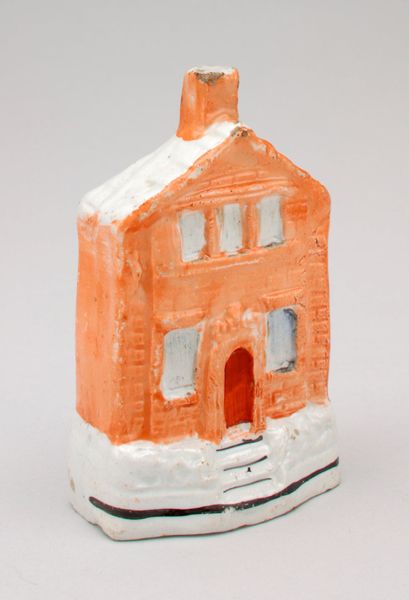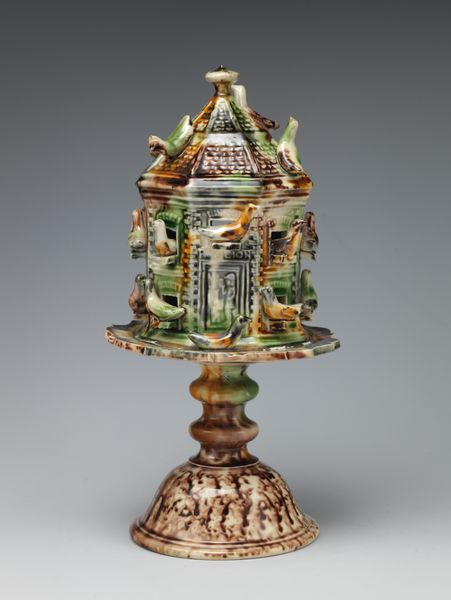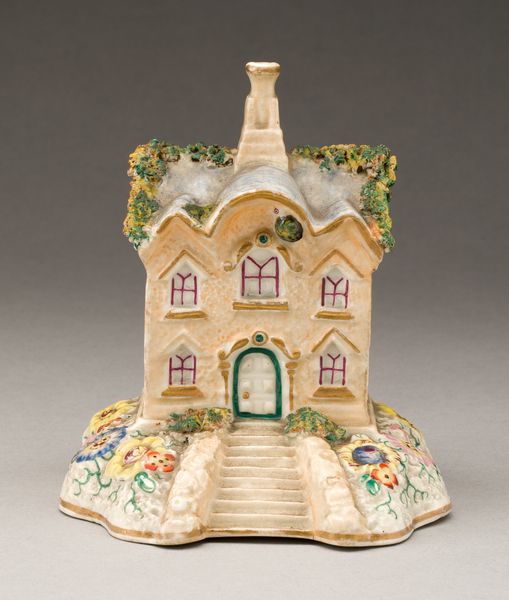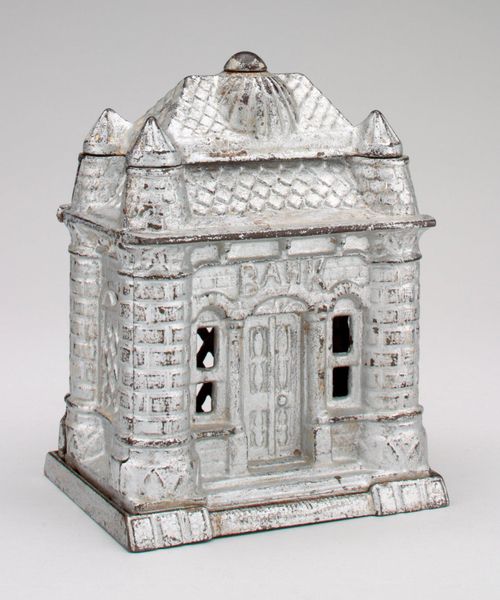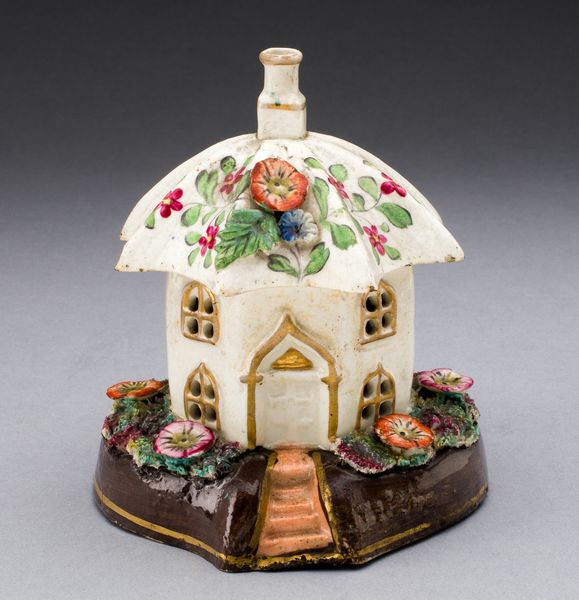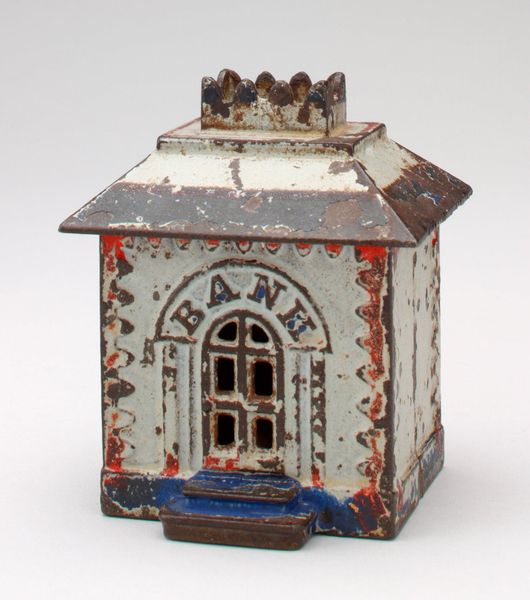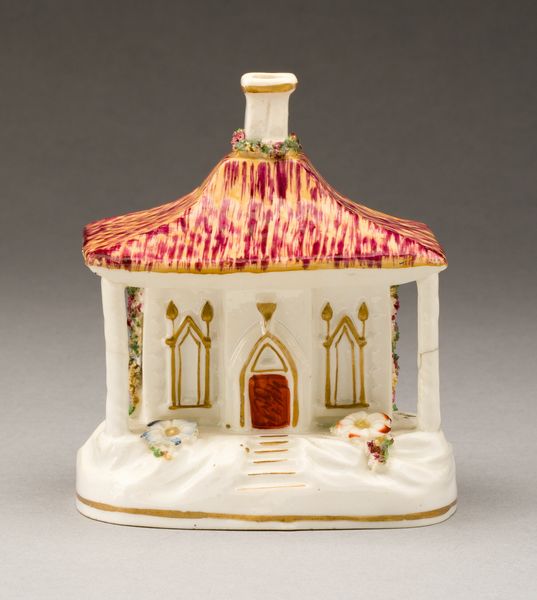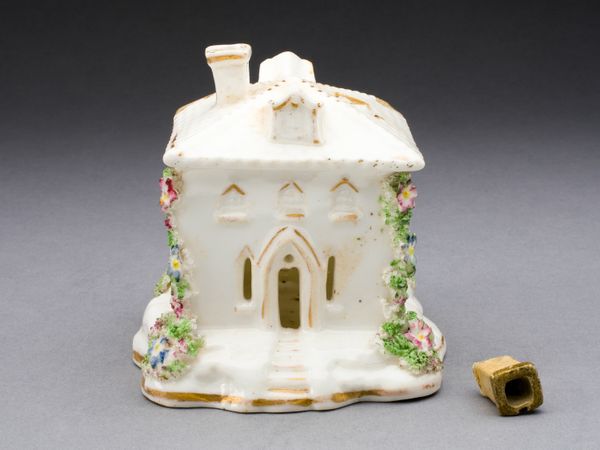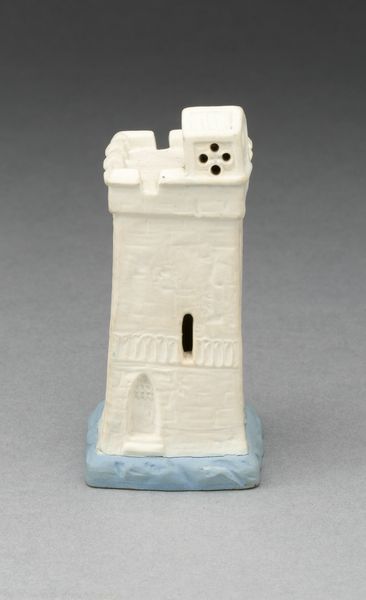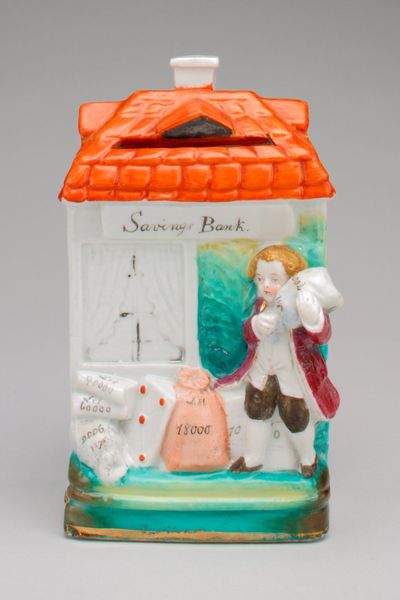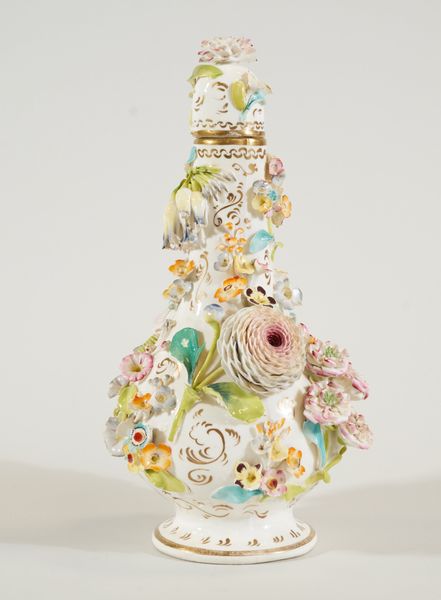
ceramic, earthenware, sculpture
#
neoclassicism
#
ceramic
#
earthenware
#
stoneware
#
sculpture
#
ceramic
#
decorative-art
Dimensions: 17.1 × 10.2 × 7.4 cm (6 11/16 × 4 × 2 7/8 in.)
Copyright: Public Domain
Editor: This earthenware incense burner, made around 1830 by the Staffordshire Potteries, is unexpectedly charming! It's shaped like a cottage and feels almost whimsical. How should we interpret such a decorative piece? Curator: Well, let's begin with its materiality. Earthenware was a readily available, affordable material. So, think about the social context. Who was producing this, and for whom? Staffordshire potteries were all about mass production, weren't they? Editor: That's right. It probably wasn't for the elite then. Were these accessible to the burgeoning middle class? Curator: Precisely. Consider the process: mold-made ceramics replicated widely, catering to rising consumerism. The decorative "foliage" highlights a romantic ideal of country life, doesn’t it? But think about the reality for the factory workers creating these objects. Were they experiencing a rural idyll or long hours, low wages and urban environments? Editor: A disconnect, then, between the object's image and the reality of its production? Was this contrast typical of the era? Curator: Often. The very act of replicating this picturesque scene en masse cheapened its symbolic value, wouldn't you say? Think about the consumption of such goods: was it mere escapism, a means of aspirational display or something else entirely? What's the function of decoration in a rapidly industrializing society? Editor: It certainly provides a different perspective knowing more about how it was actually made! The charm takes on a new complexity when you consider the lives of those crafting it. Curator: Exactly. Now, next time you look at seemingly innocuous decorative object, will you consider the labor behind its creation? Editor: Absolutely. It makes me appreciate the object in an entirely different light. Thanks for pointing that out.
Comments
No comments
Be the first to comment and join the conversation on the ultimate creative platform.
